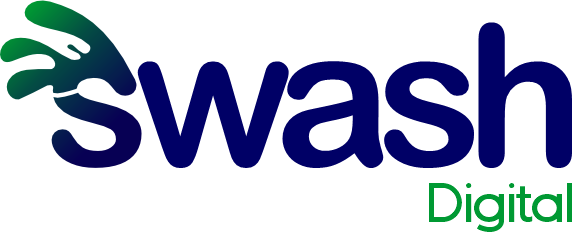When you hear the term “Artificial Intelligence,” what comes to mind? For many business owners, it conjures images of massive tech companies in Silicon Valley with billion-dollar research budgets and teams of data scientists. It feels complex, expensive, and frankly, out of reach for a small or medium-sized business in Canada.
But what if we told you that this perception is outdated?
The reality in 2025 is that practical, affordable, and high-impact AI is no longer the exclusive domain of giants. It has become one of the most powerful equalizers available to ambitious Small and Medium-sized Businesses (SMBs). The question is no longer if you can leverage AI for your small business in Canada, but how you can do it strategically to drive real, measurable growth.
Many business leaders are curious about AI but are rightfully intimidated by the perceived cost and complexity. They don’t need a sentient robot; they need solutions to real-world business problems. This guide will demystify AI and show you five tangible, high-ROI practical AI applications you can implement to save time, increase sales, and build a more efficient, intelligent business.
1. Supercharge Your Sales Funnel
The Problem: Your sales team is spending 80% of their time on low-value tasks. They are manually sifting through unqualified leads from a contact form, sending dozens of follow-up emails that get ignored, and trying to guess which prospect is actually ready to buy. Every hour they spend on these administrative tasks is an hour they are not spending on what they do best: building relationships and closing deals.
The AI Solution: Intelligent Lead Scoring & Automated Nurturing.
This isn’t about replacing your sales team with robots. It’s about giving them superpowers. Instead of treating every lead the same, an AI-powered system can act as a tireless assistant that qualifies and warms up prospects for you.
How It Works, Simply: We can build a custom system that integrates with your website and CRM. This system analyzes incoming leads based on their “digital body language”—which pages they visited on your site, which emails they opened, if they downloaded a pricing guide, etc. Based on these actions, the AI assigns each lead a “score.”
A lead who visits your pricing page three times gets a high score.
A lead who only visited your “About Us” page gets a low score.
The magic happens next. High-score leads are instantly flagged and passed to your sales team for immediate, personal follow-up. Meanwhile, lower-score leads are automatically enrolled in a personalized email nurturing sequence. This AI-driven campaign sends them helpful content over time, “warming them up” until their score increases and they become sales-ready.
The Bottom Line: This is a clear example of how to use AI to increase sales. Your team stops wasting time on tire-kickers and focuses exclusively on hot, qualified prospects, dramatically increasing their efficiency and conversion rates.
2. Automate 80% of Your Customer Service Inquiries
The Problem: Your inbox is flooded with the same five questions every single day. “What are your hours?” “What is your return policy?” “How do I reset my password?” Your customer service team, or maybe just you, spends hours typing out the same answers, pulling them away from handling the genuinely complex issues that require a human touch.
The AI Solution: A Custom-Trained “Knowledge Base” Chatbot.
Forget the annoying, generic chatbots you’ve argued with on other websites. A modern AI chatbot doesn’t have to be a frustrating experience. The key is to build one that is trained only on your company’s verified information.
How It Works, Simply: We can develop a simple AI assistant for your website. We don’t just plug in a generic tool; we feed it your own internal documents—your FAQs, your return policy, your product manuals, your “how-to” guides. This AI then becomes an expert on your business and nothing else.
When a customer asks a question, the AI instantly searches its verified knowledge base and provides a precise, accurate answer. If the question is too complex or it doesn’t know the answer, it seamlessly escalates the chat to a human agent.
The Bottom Line: You provide instant, 24/7 answers to the most common questions, dramatically improving customer satisfaction. This is a perfect example of business process automation that frees up your human support team to solve the unique, high-value problems that actually build customer loyalty.
3. Make Your Marketing Smarter, Not More Expensive
The Problem: You have a limited marketing budget and you’re tired of guessing. You’re creating blog posts, running social media ads, and sending newsletters, but you don’t really know what’s working. Which topics resonate? Which headlines get clicks? You feel like you’re throwing money at a wall and hoping something sticks.
The AI Solution: AI-Powered Content & Conversion Analysis.
AI is incredibly good at finding patterns in data that are invisible to the human eye. By applying this to your marketing, you can move from guesswork to data-driven decisions.
How It Works, Simply: We can implement AI tools that analyze all of your marketing channels. The system can review your website analytics, social media engagement, and email campaign data to give you clear, simple answers to critical questions:
“Which blog topics generate the most leads?”
“What do our most engaged customers have in common?”
“Which email subject lines lead to the highest open rates?”
Based on these insights, you can double down on what works and stop wasting resources on what doesn’t. You can even use AI to personalize your website, showing different headlines or testimonials to different visitor segments to maximize conversion rates.
The Bottom Line: This use of AI gives you the power of an enterprise-level marketing analytics team without the cost. You get a higher ROI on your marketing spend and a clearer understanding of what your customers truly want.
4. Reclaim Your Team’s Time from “Admin Drudgery”
The Problem: The silent killer of productivity in every business is “admin drudgery”—the endless, non-billable tasks that need to get done but create zero value. This includes manually creating invoices, scheduling meetings through back-and-forth emails, and transcribing meeting notes.
The AI Solution: AI-Powered Administrative Assistants & Workflow Automation.
This is often the easiest and highest-ROI area to start with AI. By automating these simple administrative workflows, you can reclaim hundreds of hours of productive time for your team.
How It Works, Simply: There are two key approaches:
AI Meeting Assistants: Tools that can join your virtual meetings (like on Zoom or Google Meet), automatically record them, and provide a full, searchable transcript and a concise, AI-generated summary with action items. The hour your team used to spend writing and organizing notes is instantly given back.
Workflow Automation: We can build connections between the different apps you use every day. For example, we can create a custom workflow where, when a client signs a proposal in your e-signature software, a new project is automatically created in your project management tool, an invoice is generated in your accounting software, and a welcome email is sent to the client—all without a single human click.
The Bottom Line: This is business process automation at its most practical. By eliminating these low-value tasks, you empower every member of your team to focus on their core, strategic work.
5. Unlock the Hidden Goldmine in Your Own Data
The Problem: Every business, no matter its size, is sitting on a goldmine of data. It’s in your sales records, your accounting software, your website analytics, and your customer list. The problem is, this data is siloed and messy. You have a feeling about which products are most profitable or which customers are most loyal, but you don’t have the hard data to back it up.
The AI Solution: A Custom Business Intelligence Dashboard.
You don’t need a complex, enterprise-level data warehouse. You need a simple, visual dashboard that connects your key data sources and tells you what’s happening in your business in real-time.
How It Works, Simply: A partner like an AI consultant in Calgary can connect these disparate data sources (like QuickBooks, Shopify, and Google Analytics) into a single, easy-to-read dashboard. An AI layer can then analyze this combined data to find powerful correlations. It might uncover insights you never would have seen otherwise, like:
“Customers who buy Product A are 70% more likely to buy Product B within 30 days.”
“Our most profitable clients come from a specific marketing channel.”
“There is a seasonal spike in demand for this service that we have been missing.”
The Bottom Line: This moves you from running your business on intuition to running it on intelligence. You can spot trends earlier, identify new opportunities, and make strategic decisions with confidence.
"You don't need a complex, enterprise-level data warehouse. You need a simple, visual dashboard that connects your key data sources and tells you what's happening in your business in real-time."
Swash Digital
Conclusion: Your First Step into AI Doesn't Have to Be a Giant Leap
As you can see, implementing AI for your small business in Canada isn’t about building a sentient robot. It’s about taking a practical, problem-focused approach. It’s about identifying a specific pain point in your business and applying a smart, modern tool to solve it.
The hardest part is often knowing where to start. Which problem is the right one to tackle first? Which solution will provide the biggest ROI? That’s where a trusted partner comes in.
At Swash Digital, we specialize in helping Canadian SMBs navigate this journey. We are not just a technology vendor; we are your strategic partner. We start by understanding your business, and then we design and build the custom AI and automation solutions that will have the greatest impact.
If you’re ready to explore how a practical AI solution can help your business grow, let’s have a conversation.




